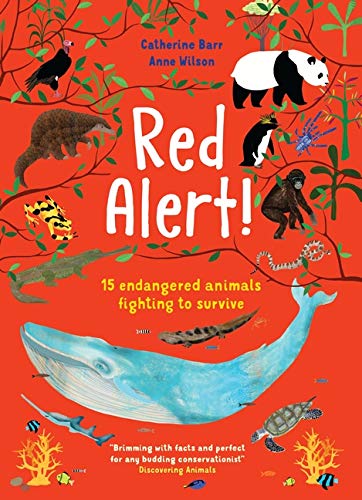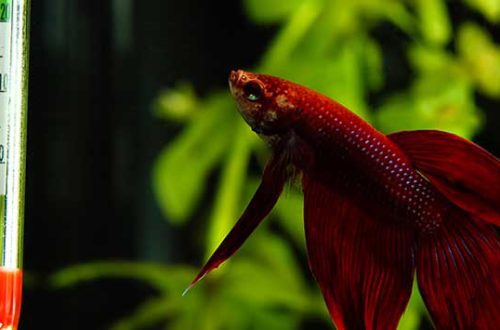
د خطر سره مخ حیوانات او د مینځني او سویلي یورال سور کتابونه
Who will never get into such a book is the population of officials. And it is impossible to find some animals in the Red Book of the Urals for the most unpretentious reason: it simply does not exist in this form. The case, in particular, rests on the territorial division. Each region has its own Red Book, and one part of the territory of the region can be in the Urals, and the other part is outside it. In principle, it is possible to create a general list of endangered species for the entire Urals, but it will add little to regional registers, and for practical assistance, one will still have to turn to local regulations and resources.
For the Middle and Southern Urals, such books existed, but in our time, in such matters, they are mainly guided by local lists. Animals that are found in the Northern or Polar Urals need andskat in regional books, for example, in the Red Book of the Yamalo-Nenets Autonomous Okrug. It mentions, in particular, three groups of reindeer, one of which: the polar-Ural population (up to 150 animals) could be recorded in the Red Book of the Urals.
If the deer are not impeded by gas pipelines and other communications, then they are capable of migrating over a distance of more than 1000 km, that is, in principle, they can migrate from one regional Red Book to another. In the Yamalo-Nenets Autonomous Okrug, the Polar Urals Reserve has been created, in which the shooting of animals is prohibited and the access of domesticated deer is limited. Nevertheless, the number of a taxon (group) is measured according to some data by dozens of individuals, according to others, more optimistic, up to 150 specimens.
In accordance with the international classification, in all Red Books, the degree of danger of extinction of animal species classified into 6 categories:
- 0 – disappeared populations. This saddest group is made up of vertebrates, the existence of which has not been confirmed over the past 50 years.
- 1 is endangered. The population has reached a critical level.
- 2, 3, 4 – between 1 and 5.
- 5 – recovering populations. The number of animals is approaching a state where urgent measures for restoration are not required.
In an ecological sense, the Middle and Southern Urals stand out from the entire range, far from being for the better.
کړی
Red Book of the Middle Urals
This should include endangered species of the Ural nature on the territory of Bashkortostan, Perm Territory, Sverdlovsk and Chelyabinsk regions. The pages of this book are regularly updated by poachers and similar business executives. Before identifying the circle of victims, one should pay attention to the external background that accompanies human activity.
According to official documents, the quality of water in many reservoirs in the Sverdlovsk region ranges from dirty to very dirty or even extremely dirty. The total emissions polluting the atmosphere are more than 1,2 million tons per year. The volume of wastewater, of which 68% is polluted, is almost 1,3 billion cubic meters. meters per year, that is, about a cubic kilometer of dirty water is poured out by the Sverdlovsk region alone. The rest of the regions are no better.
Six main rivers of the region are designated as the most polluted water bodies in Russia. In the absence of landfills for the neutralization of toxic waste, on the territories of industrial enterprises there are sludge storages and settling ponds that have accumulated about 900 million cubic meters of toxic wastewater.
About 20% of the forests around industrial centers are deprived of part of the needles or foliage due to harmful emissions. Some cities and even entire districts of the Sverdlovsk region stand out even from such depressing statistics. The existing economic relations give no reason for optimism: it is more profitable for enterprises to make some penalty payments than to change production technologies and allocate funds for reconstruction.
These are not idle conjectures, but almost verbatim excerpts from the decrees of the Government of the Sverdlovsk Region. Compensation for damageinflicted on nature remains an empty declaration. Even the rivers with the exceptionally beautiful banks of the Usva and Chusovaya, which flow through protected areas, are polluted by industrial effluents. And if we take into account the complicated procedures for obtaining budget funds and the already almost undisguised rampant theft and corruption, then the Red Book of the Urals can only be observed as the case history of a hopelessly ill person.
Despite the enormous wealth of the Urals in natural resources, there are still many places that are not of industrial interest, and therefore are well preserved and inhabited not only by people, but also by wild animals. For those who are much less fortunate, the Red Book is wide open.
مسکرات
This is just the animal to whom no luck with location, and he fell into the first category of the Red Book of the Middle Urals, more precisely, the Perm Territory and the Chelyabinsk Region. (The main habitats of the desman are floodplain lakes, and they are located to the west and east of the Ural Range). Shallow water bodies that dry up in summer and freeze in winter are not suitable for it. The muskrat can survive only in burrows with access below the water level, and for this the banks of water bodies must be well defined.
Human greed has always been the main danger for this little animal. When the number of muskrat was still large, it was massively destroyed because of the beautiful valuable fur. And the breeding of the muskrat with the same pragmatic goal led to the displacement of the desman from their usual habitats. An even more negative impact on the number of populations is exerted by human economic activity: water intake for irrigation, drainage, pollution of water bodies.
هیجګګ
Listing of the common hedgehog in the Red Data Book of the Sverdlovsk Region can surprise anyone, but not the residents of Yekaterinburg or Nizhny Tagil, who experience all the delights of the local ecological situation in their own skin. If dozens of species of insects cannot withstand it, then the food chain reaches even the hedgehog. Cutting down and plowing thickets only exacerbate the situation. Eared hedgehog is listed in the Red Book of Bashkortostan.
اروپايي منک
In the Red Book of the Chelyabinsk region, this animal falls into category 1, in Bashkortostan, into category 2, and in the Red Book of the Perm Territory, it is completely absent, as it is in the list of hunting resources. So for the European mink, the American species is more dangerous than humans.
نور حیوانات
If we ignore the everyday concept of animals, which refers only to mammals, and keep in mind what biologists mean by this, then a swarm of insects, birds and all living things except plants will take several pages just from listing them.
From mammals bats can be distinguished:
- mustachioed bat
- water bat
- bat of Nathusius
- dwarf bat
- pond night
- northern leather jacket
- late leather
- Natterera night
Members of the rodent order:
- flying squirrel – can make gliding flights up to 50 m
- big jerboa
- forest lemming
- خړ هامسټر
- garden dormouse
- د ایورسمین هامسټر
- دجنګري هامسټر
Red Book of the Southern Urals
پدې کې شامل دي endangered species of Bashkortostan, Chelyabinsk and Orenburg regions. JSC “Orsknefteorgsintez” and “Gaisky GOK” make the main contribution to the ecological situation in the Orenburg region. Given the barbaric attitude to nature, the name “Mednogorsk copper and sulfur plant” is enough to make ecologists shudder if they are not already used to the larger consequences. In the Orenburg region, clean water sources make up only 5%, while extremely dirty water is found in 16% of water resources.
About half of the land is plowed, which causes soil erosion, drought and reduced fertility. At the same time, about 25% of the water of the Ural River basin is taken along with millions of cubic meters. dirty drains of the Chelyabinsk region and their own. Biologists, who have practically no levers of influence, can only record changes in the Red Book.
South Russian dressing
This animal from marten family lives in treeless dry steppes and semi-deserts. It is no wonder that in the plowed areas it fell into category 1. Like the steppe polecat, this animal mainly hunts at night: rodents, birds and small vertebrates. An agile and swift animal avoids proximity to humans and cultivated landscapes.
Although the spotted camouflage dressing is of no value to hunters, this animal is becoming rarer and rarer in nature.
Saiga – Saiga tatarica
The subfamily of antelopes, the saiga(k), is critically endangered even by international standards. In the Red Book of the Orenburg region, this animal is also in category 1. Many people recognize this humpbacked antelope. This form is explained by the evolution of love sounds during the rut – the most powerful males make sounds (through the nose) of a lower frequency, preliminary selection goes in this direction as well.
In the Orenburg region, there is a state reserve “Orenburgsky”, which consists of 4 isolated areas, the largest of which “Ashchisaiskaya steppe” has an area of 7200 hectares. In hectares, the figure looks, perhaps, even impressive, but in relation to the protection of saigas, it sounds more like a mockery: a frightened herd of these antelopes will cross a territory measuring 8 by 9 km in less than 10 minutes. So the phrase: small herds of saigas are found in the southeastern part of the Orenburg region, should be understood in this context – they can wander by chance.
steppe cat
For the laziest and most clumsy of cats, the small areas of the reserves are not such a big loss. Perhaps that is why this beautiful animal is in the Red Book of the Orenburg Region. not very dangerous category 3. Its prey is mainly rodents and birds. In winter, when gerbils do not come to the surface, hungry cats can wander to human habitation and climb into the chicken coop.
In conclusion, we can say that the barbaric attitude to nature is typical not only for the Ural region. The environs of Norilsk and the nature of the Kola Peninsula around industrial plants leave a depressing impression. As long as the dollar and the euro remain sacred animals, there will be a safe place for wild animals category 0 only in the Red Book.





